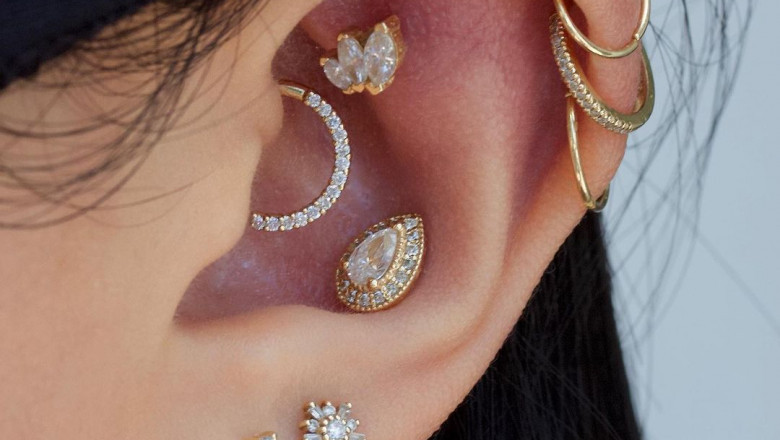views
Thinking about getting your ears pierced but feeling unsure about the pain and aftercare? You’re not alone! Ear piercing is an exciting way to express your personal style, but if it’s your first time, you probably have plenty of questions. How much does it hurt? What should you expect during the process? And most importantly, how do you take care of your new piercing?
This guide will walk you through everything you need to know about Ear Piercing Dubai, from pain levels to healing time, so you can go into the experience fully prepared.
Understanding the Ear Piercing Process
Ear piercing is a quick and straightforward procedure, but it’s important to understand the steps involved:
- Choosing the Right Spot – The most common areas include the earlobe and cartilage. Different placements come with varying pain levels and healing times.
- Sterilization and Preparation – The professional will clean your ear and mark the piercing spot to ensure proper placement.
- Piercing Method – The two main techniques are a piercing gun (typically used for lobes) and a hollow needle (preferred for cartilage and precision).
- Jewelry Selection – Hypoallergenic metals like titanium or surgical steel are recommended for reducing irritation.
- Aftercare Instructions – Proper cleaning and care will be explained to prevent infection and promote healing.
How Painful Is an Ear Piercing?
Pain tolerance varies from person to person, but understanding the typical pain levels can help set expectations:
- Lobe Piercing – This is the least painful and feels like a quick pinch. Most people rate it around 2-3 on a scale of 10.
- Helix (Upper Cartilage) – Slightly more painful than the lobe due to the thicker cartilage, with a pain level around 4-5.
- Tragus (Small Flap in Front of Ear Canal) – A bit more intense due to the dense cartilage, usually rated 5-6.
- Daith (Inner Cartilage Curve) – Medium pain, often around 4-5, but some find the pressure more uncomfortable than the actual piercing.
- Industrial (Two Piercings Connected by a Barbell) – This can be more painful since it involves two piercings at once, usually around 6-7.
The good news is that the pain only lasts a few seconds, and any soreness typically fades within a few days.
What to Expect After Getting Your Ears Pierced
Once the piercing is done, here’s what you should keep in mind:
- Healing Time – Lobe piercings heal within 6-8 weeks, while cartilage piercings can take anywhere from 4-12 months.
- Aftercare Routine – Clean your piercing twice a day with a saline solution and avoid touching it with dirty hands.
- Possible Swelling – Some redness and slight swelling are normal for the first few days. Applying a cold compress can help.
- Avoiding Infections – Keep hair products and makeup away from the area and don’t change earrings too soon.
Common Myths About Ear Piercing
- Myth: Piercing Guns Are Always the Best Option – While convenient, Ear Piercing in Dubai guns can cause more trauma to cartilage, making needles the better choice for non-lobe piercings.
- Myth: Turning the Earring Helps Healing – Twisting your earring too often can irritate the wound and introduce bacteria.
- Myth: You Can Change Earrings After a Few Weeks – Rushing the process can cause irritation or even the hole closing up. Always wait for complete healing.
Tips for a Smooth Healing Process
- Stick to high-quality jewelry made from hypoallergenic materials.
- Avoid sleeping on your new piercing to prevent pressure and irritation.
- Stay consistent with your aftercare routine—consistency is key to proper healing.
- If you notice persistent swelling, discharge, or pain, seek professional advice.
Conclusion
Getting your ears pierced is a fun and rewarding experience, but knowing what to expect can make the process much smoother. While some discomfort is inevitable, it’s usually quick and manageable. The key to a hassle-free healing process is proper aftercare and patience.






















Comments
0 comment